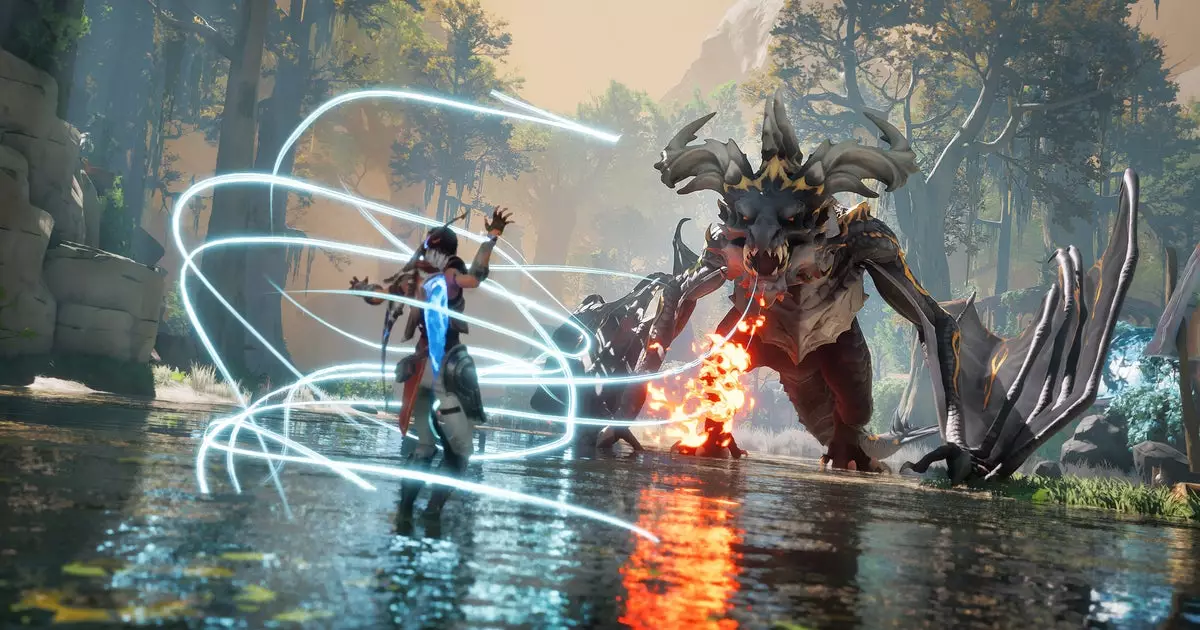The video game industry has undergone significant changes over the years, each era marked by innovation and creative exploration. Among the pivotal points in this evolution occurred when a group of prominent developers from BioWare ventured out to form various independent studios. This article explores the successes and challenges faced by these studios, with a focus on Yellow Brick Games and their upcoming title, “Eternal Strands.”
The Fall and Rise of Former BioWare Developers
In what can be dubbed a transformative period for the gaming world, many seasoned developers from BioWare found themselves at a crossroads. The dissolution of their veteran team resulted in a scattering akin to comets across the industry, leading to the formation of new game development studios. While some of these entities, such as Inflexion Games and Archetype Entertainment, have thrived and maintained a solid trajectory, others like Humanoid Origin and Worlds Untold have experienced closures or operational pauses, often without having produced a single title. This stark contrast raises critical questions about the nature of game development, the struggles of independence, and the unpredictable dynamics of creativity amid commercial pressures.
Introducing Yellow Brick Games
Against this backdrop, Yellow Brick Games, founded by former Dragon Age director Mike Laidlaw, has emerged as an intriguing player in the field. The studio’s forthcoming game, “Eternal Strands,” set to be released on January 28th, represents a beacon of hope not only for its creators but also for fans of mid-tier gaming experiences. Currently, players can explore a demo made available on platforms like Steam and the Epic Games Store, igniting excitement and speculation about what the final product may offer.
“Eternal Strands” presents itself as a hub-based fantasy action title, inviting players into a vibrant world where they can embody a robust battlemage. This character boasts an impressive arsenal of spells and abilities that echo a playful balance between exploration and combat. The ability to create wildfires, construct ice bridges, or leverage telekinesis to interact with the environment pays homage to some beloved gaming mechanics found in previous titles. Namely, players might feel shades of iconic games like “Shadow of the Colossus” and elements that evoke memories of adventure-driven experiences reminiscent of “The Legend of Zelda.”
However, a critical analysis of the game points to certain design choices that may not resonate with everyone. The visual aesthetics have been described as lacking depth, leaning towards a polished yet generic look. This raises a vital discussion: can a game truly thrive if it appears visually sterile or overly simplified? The essence of a game’s identity should stem from how it connects with players, immersing them in a unique world rather than echoing previously established norms.
In a market overcrowded with titles that prioritize visual fidelity over gameplay mechanics, “Eternal Strands” appears to carve its niche through an emphasis on real-time physics systems. Laidlaw’s vision seems to aim at rekindling the spirit of mid-2000s action games, which often featured inventive mechanics and playstyles that challenged players to think creatively. For veterans of titles like “The Force Unleashed” and “Psi-Ops,” this call back to a different era may offer a refreshing break from the more traditional gaming formulas that dominate the current landscape.
The demo’s design showcases mechanics that allow for creative interactions with in-game elements—freezing foes in place before leveraging environmental objects to cause damage carries the whimsical thrill many players miss in contemporary titles. This gameplay potential could serve as the foundation for a rich experience that captivates the imagination and ignites nostalgia, inviting both new players and seasoned veterans to engage with its universe.
The Future of Independent Studios
As upcoming releases from independent studios like Yellow Brick Games draw nearer, the industry watches with bated breath. With uncertain prospects revealed by the fates of their predecessors, these new creators carry the weight of both hopes and challenges. “Eternal Strands,” with its engaging mechanics and ambitious design philosophy, stands as a testament to the resilience of independent studios in an era defined by change and unpredictability. While the final product remains to be seen, the dialogue surrounding it underscores an ongoing evolution, one that can redefine how games are played and experienced in the years to come.

